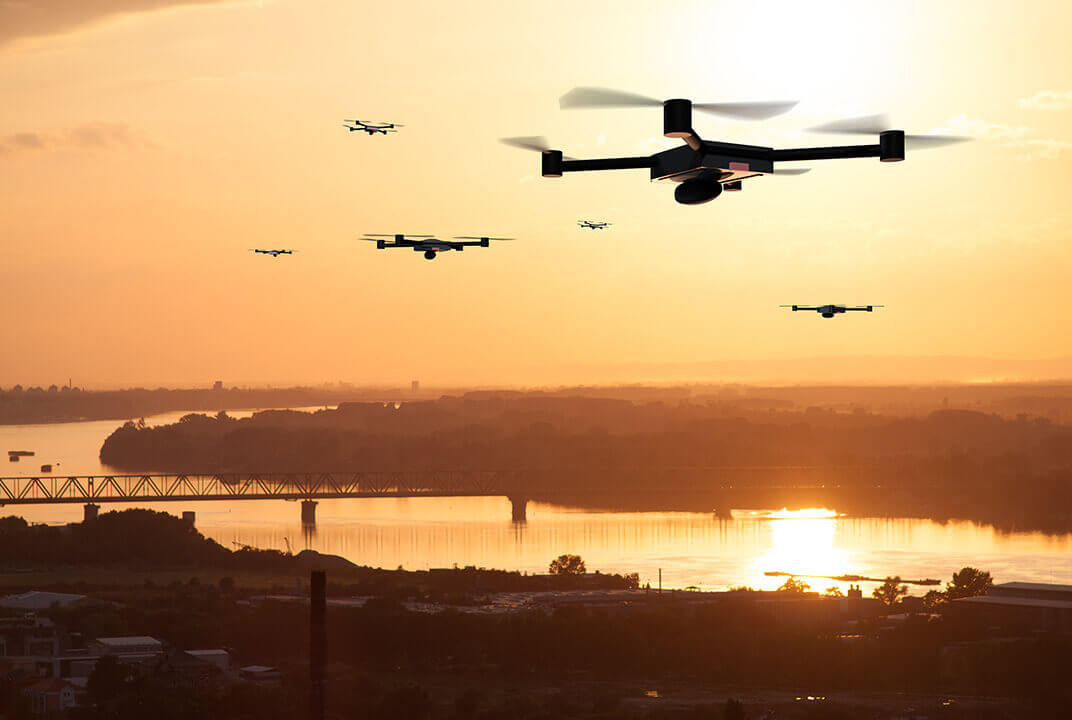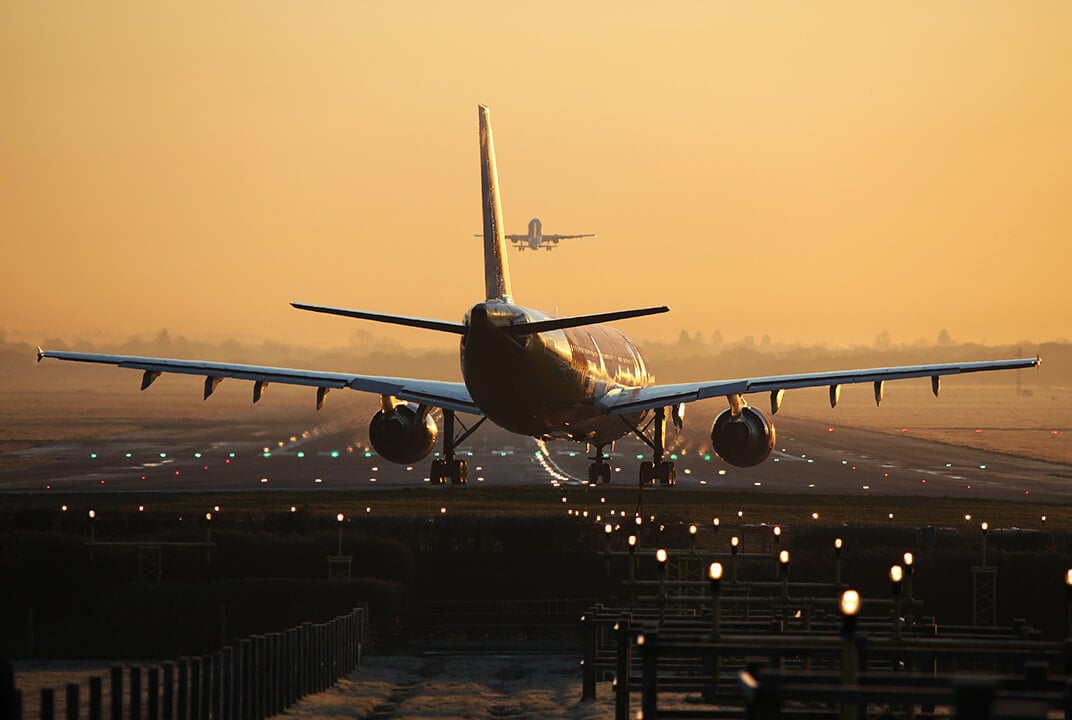Insight | Honeywell rips up the rule book to usher in a new world of UAV possibilities
Honeywell rips up the rule book to usher in a new world of UAV possibilities
null
Visionary technologies deserve new and innovative ways of thinking. Our ground-breaking partnership with Honeywell in designing a new satcom system for UAVs is testament to this.
“The key breakthrough was we build it first and then we iterate rapidly to incorporate market feedback.”
Listening to Bobby Anderson, Honeywell’s Product Director for UAV Satcom Products, enthusiastically explain the design process behind the new small utility satcom system – developed in conjunction with Inmarsat for its unmanned aerial vehicles (UAVs) – you could be forgiven for thinking he was describing the progress of Apple’s latest iPhone, rather than a new benchmark for legacy industries such as aviation.
After all, the aviation industry, quite rightly, is noted for its caution. That’s not to say innovation doesn’t come naturally – it does – but as it’s tempered by a natural disposition towards safety and adhering to regulations it doesn’t generally do things at pace.
But this fresh, radical way of thinking – what Anderson describes as a philosophical paradigm shift – clearly demonstrates the extent to which digitalisation, and the dynamism and agility which comes as part of this transformation, is now driving parts of the aviation sector.
As such, it should come as no surprise that the UAV market is at the forefront of these changes. ‘Build fast, test fast, learn fast’ is almost a mantra for the Honeywell employees working within this fast-moving and exciting division.
Go get it done; go figure it
And nowhere has this original spirit been better exemplified than in the internal challenge Honeywell set its engineers in 2019. Honeywell wanted its engineers to come up with a new small, lightweight satcom system for its UAVs. What began with 12 teams submitting proposals was then whittled down to three teams. Those three teams were given some small seed funding and then after three months, two of those teams were able to demonstrate a working satcom system.
“Essentially, we picked what we considered was a minimum viable product (MVP) that offered a command and control link and could get some payload data off,” says Anderson. “It was all about weight, size and then capability. It really was a case of: ‘Go get it done; go figure it out.’”
Working in conjunction with Inmarsat, this bold vision led Honeywell to create a system that is 90% lighter than its next comparable system. And rather than a three to five year development programme, the focus was on building a working prototype – an MVP – and then iterate. Over 16 months there were four iterations.
“From an innovation perspective,” enthuses Anderson, “it was a complete game changer.”
Small, lightweight and compact.
A company you can trust
Honeywell Aerospace has been at the vanguard of aviation innovation for over a century. As such, it makes sense that it brings this wealth of experience and expertise, alongside a relentless quest for modernisation, to the exciting UAV space.
"The founder of one of our legacy companies, Lawrence Sperry, invented the autopilot," points out Chris Hawley, Honeywell's director of marketing for new aerospace technologies. "So you could say we've been involved in unmanned aircraft - or at least automated aircraft - from the outset."
The breadth of Honeywell’s involvement in the UAV space is as impressive as it is comprehensive. Its technologies are involved in pretty much everything bar the airframe – so avionics, electric and hybrid-electric propulsion, detect-and-avoid systems, actuation, and flight infrastructure. And then there’s its ground-breaking connectivity partnership with Inmarsat of course.
A partnership for today – and tomorrow
Without the right connectivity solution, the transformational potential of the UAV market will remain just that – potential. By enabling commercial UAVs to fly safely in complex and mixed airspace, Inmarsat’s collaboration with Honeywell is the catalyst to unlocking this potential. By providing UAVs with connectivity – via the small utility satcom system – it ensures they can fly Beyond Visual Line of Sight (BVLOS), especially in remote areas with no cell tower or microwave transmitter nearby.
“It may be [used for] a power line inspection,” continues Anderson. “Or it could be an energy inspection, an offshore oil rig inspection or an agricultural inspection. There are a lot of different use cases today.”
And Inmarsat’s long and trusted relationship with Honeywell means we can develop a mutually beneficial roadmap that will drive forward the UAV sector.
“It’s about that constant feedback cycle,” outlines Anderson. “This ensures that we can both understand what the market needs today, as well as what it needs tomorrow, and that we can develop satcom services that accommodate those needs.”
The right infrastructure and technology to drive real value
In any discussion concerning UAVs, the temptation is to wax lyrical about the ostensibly sci-fi aspect – unmanned air taxis and the like. In fact, these will be a reality sooner than a lot of people imagine.
So, while cargo deliveries is the obvious touchpoint at present, it’s important to note that the wider societal benefits UAVs will bring are not only around the corner, but in some cases already happening.
“These include search and rescue operations,” Hawley explains, “and medical deliveries to remote areas – places that don’t have roads.”
The global pandemic has seen deliveries of PPE and critical supplies demonstrate one benefit. UAVs also assist fire brigades in assessing damage to buildings, accelerate emergency responses and aid police surveillance.
“Leveraging those operations is what's going to firm up all the regulations that will eventually be in place to show that using drones in an urban area is safe, reliable and something the public can trust,” says Anderson.” I think that by, say, 2030, it's going to be a common thing to see a drone drop off something in your front yard.”
A game changer in how people live their lives
Inmarsat’s dynamic collaboration with Honeywell is central to the limitless possibilities the UAV space offers. Our satcom technology is a catalyst, allowing Honeywell to continue its quest to innovate at pace.
For Hawley, UAVs are going to change how we live dramatically.
“It’s going to unlock the third dimension of Earth,” he suggests. “Right now the sky is for long distance travel or the very wealthy to make short distance travel. Very soon people will be able to make deliveries by air themselves, very quickly, and they'll be able to fly around in urban areas at an affordable price.”
Anderson concurs. He believes that much like the introduction of the automobile in the 1900s, UAVs will create an entirely new economy.
“A completely new ecosystem is going to fuel massive gains in global productivity,” he says. “It’s going to drive improvements to people’s standard of living. It’s going to be a game changer in how people live their lives.”
Critical to this are the new ways of thinking – this paradigm shift – that digital transformation has ushered in. The rule book has been torn up. The spirit of collaboration is vital.


